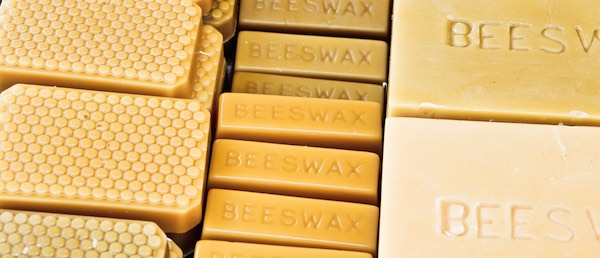

If you’re a Natural Beekeeper, then beeswax is part of your harvest – when you crush your natural comb to extract the honey, there’s beeswax to spare. That’s how beekeeping with natural comb works.
It’s a good thing for your bees, because encouraging comb renewal is an important part of colony health.
Honeybees prefer to lay their eggs and rear their brood in fresh comb. So by harvesting the excess, you’re making space in the hive for this to occur.
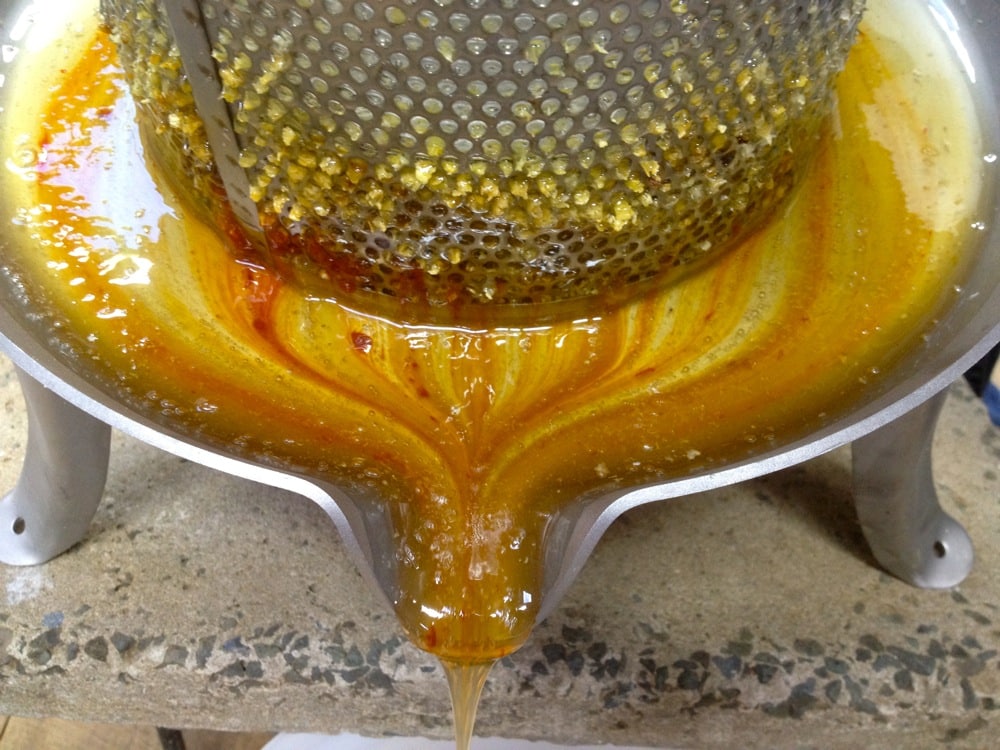
When you crush the comb, the honey comes out, and you’re left with a sticky mess of awesomeness. There’s so many ways you can use it.
First of all, though, you need to render the wax – to separate it from all the bits of rubbish and leftover stickiness.
But that’s quite doable, either with simple stovetop gear, or a solar powered wax extractor.
As a result of this process, you’re left with a block of solid sunshine – beeswax.
It’s magical stuff, and has been used for thousands of years for all sorts of different useful purposes.
Here’s a few ideas you might not have thought of, as well as those we know and love –
100% pure beeswax candles
Local light! What better way to light your life than with the beeswax from your hive.
And so very simple to do – get some good moulds and wicks, and off you go. Here’s a great how-to.
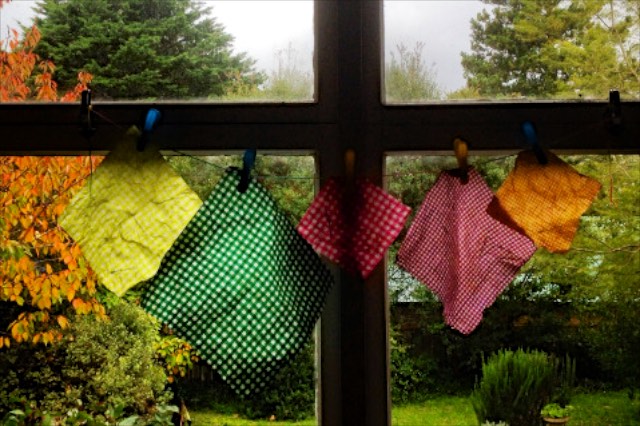
Food Wraps
You’ve hopefully heard about, and are maybe even are using, beeswax wraps instead of plastic clingfilm in your home by now.
The lovely folks at Gingham and Wax use our friend Tim Malfroy’s natural beeswax to make their wraps, which are made with organic cotton, beeswax and natural oils. We love ours!
You can also try making them yourself.

Shoe Dubbin
In the spirit of reusing and taking care of what you have, we support the comeback of shoe dubbin! Good boots deserve good care, without petrochemicals or unsustainable ingredients.
Particularly, check out Fat of the Land by the rather excellent Alice Springs shoemaker James Young – it’s made in Alice Springs out of Tim Malfroy’s beeswax (yes, there’s a pattern here) and camel hump fat, which is a by-product.
You can also make your own dubbin, if you have some spare fat, and a bit of oil, in addition to your beeswax.

Shiitake Mushroom Log Sealant
We use this a lot, and we love it. Once you’ve drilled and inoculated your shiitake logs, you need to seal them up so no other errant fungal spores get into your carefully drilled holes.
The answer, is seal ’em up with beeswax!
Beeswax provides a non-toxic, impermeable barrier for the shiitake log, so it can sit quietly in the shade somewheres until it’s ready to fruit and bear you many dinners.

Attaching your starter strips
First things first – let’s set up our future top bars, for future comb building, shall we?
With a nice starter strip, to remind the bees to build their comb off the bars, and not across them (it’s much better for everyone involved). Secured with your very own beeswax. How excellent.
*NOTE: you would only use wax from disease-free hives for this job, obviously, as some disease spores can transfer through wax.

Wood preserver for beehives
When heated and mixed with linseed oil, beeswax is the perfect sealant for your beehive boxes, both inside and out.
It will protect your boxes from weathering, is a natural waterproofing, and, of course, provides a toxin-free environment for your honeybees with no artificial anything.

And some more beeswax uses:
Pretty useful stuff, right?
And it’s all 100% natural and completely toxin free, if you practice natural beekeeping and don’t use any pesticides in your hives (I know that sounds crazy, but it’s conventional practice).
Don’t have time right now? No worries. The best bit is that beeswax, both in its purified and also it’s unpurified form, will not decay, or get mouldy.
So if you happen to have the leavings of your last honey extraction still stored in a sealed bucket (ahem – this might include us) – get to it! There’s so much goodness to make from it.
If you want to learn the craft of Natural Beekeeping, we run excellent courses in Sydney, Byron Bay and Southern NSW.
And if you’re further afield, all our natural beekeeping articles + book recommendations are here.
Good luck! What do you do with your beeswax?

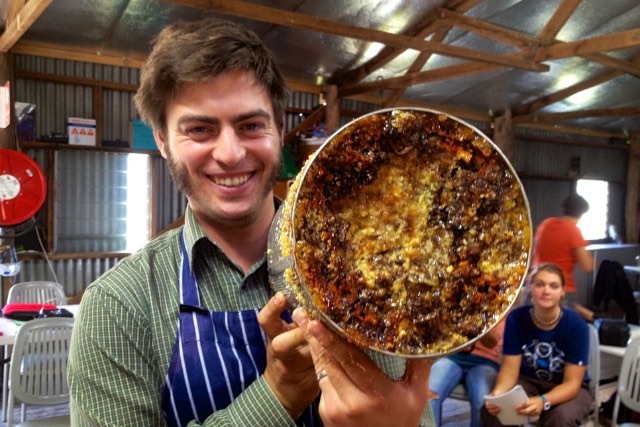
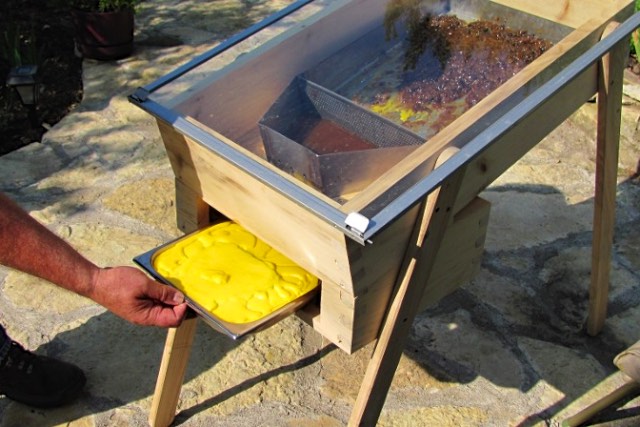













Some great ideas. I’ve also made modeling wax (for play) and lately have been using it to make fire starters (http://www.littleecofootprints.com/2015/06/how-to-make-natural-firelighters.html).
yes the slumgum (the rubbish after the pure wax is extracted) makes great firelighters too 🙂
New word for the day “slumgum”. I like it. Thanks 🙂
Here’s another one – I use a beeswax hair wax and I’m thinking of making my own when I’m out because I’d like something with no added smells (and other things) http://www.momtastic.com/diy/425571-diy-hair-pomade-for-fathers-day/
Great post. My daughter has some beeswax a beekeeping friend gave her and she wasn’t sure what to do with it. We just added bees to our homestead after a few-year hiatus – it’s wonderful to have them back.
isn’t it? I’m about to get mine back too, after a year’s hiatus. yay.
Congratulations! Life is better with bees – and I’m convinced my Seminole pumpkin yields are going up. We were lucky enough to have a friend that’s a pro beekeeper. He let me record him giving a beekeeping lesson as he prepared our hive for us – check it out: http://www.floridasurvivalgardening.com/2015/06/a-free-beekeeping-lesson.html
I like you guys but your holier than thou natural beekeeping shtick is a real turn off. How do you know “Honeybees prefer to lay their eggs and rear their brood in fresh comb. So by harvesting the excess, you’re making space in the hive for this to occur.”? You have a good story, why not just stick with the facts.
Well, because studies have shown that they do prefer to lay their eggs in fresh comb. honeybees prefer the most disease free environment possible for their brood, and since comb, being fat based, bio-accumulates toxins used in hive maintainence (if any) and also environmental toxins brought back to the hive by workers (if any), over time, it appears that impacts the health of the brood, if the queen is forced to lay successive generations of brood in old comb. Go look up sub-lethal accumulation in bee research.
Interesting article. Another use: I am an amateur bookbinder and make small blocks of wax to use to wax my threads before sewing to prevent fraying or ‘fluffing’ of the thread.
Also, what is the tool you are using to put hot wax onto your frames to make the foundation strips stick into the groove?
good add! Waxing thread. The tool in that pic is this vid – a stainless turkey baster thingy – https://www.youtube.com/watch?v=hsMIVBR01HA
Thank you. 🙂
Can the wax from native bees (Tetragonula carbonaria) be cleaned and used in the same ways as European bee wax?
The wax is sometimes used for the mouthpiece of didgeridoos, but i think its just taken as it comes from the hive, not cleaned.